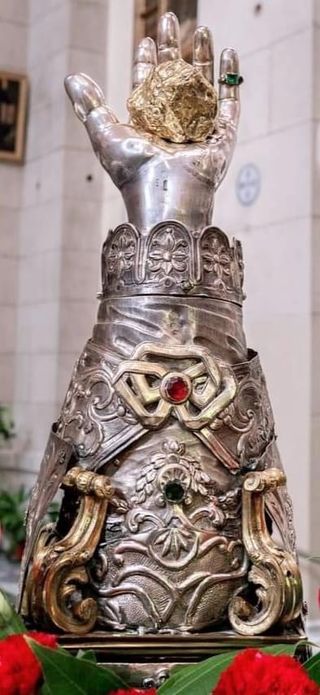
In 1461, the Dominican father Salvatore da Gaeta celebrated a mass at the church of Maria SS. del Boschetto, asked the city and obtained that it was rebuilt the high altar, defective and in poor condition. During the works, a lead box containing a relic of an arm and a parchment written in a Chaldean language was found. The box, as a precaution, was placed at the mother church of the city. In 1481, some Chaldean priests passing through Milazzo recognized that language and interpreted the script. The scroll said that in the box there were relics belonging to the arm of St. Stephen Protomartyre. In the city, their claims were not given full credibility and the Arcicescovo of Messina undertook to re-interpret the writing.